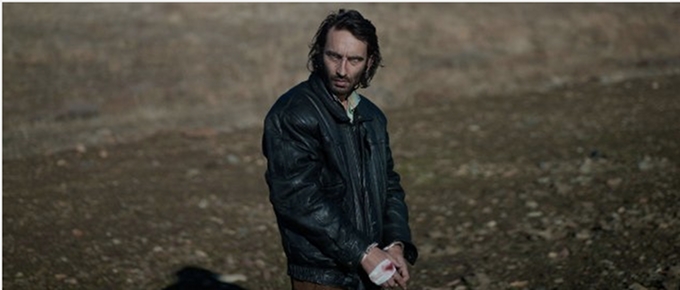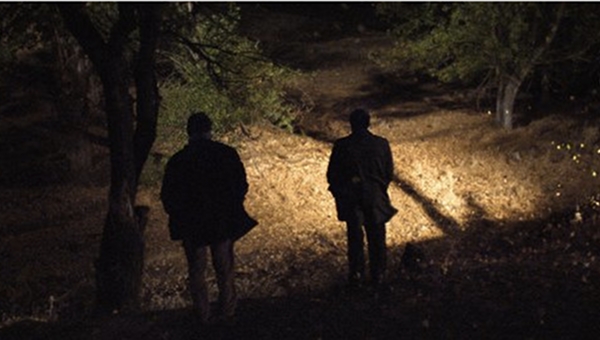Cinema takes many forms, and it can often be easy to forget this if fed a steady diet of a certain type. If the blockbuster is the instant gratification of fast-food that leaves you a little underwhelmed afterwards (and perhaps a bit nauseated and ashamed…), then ONCE UPON A TIME IN ANATOLIA is an example of gourmet cinema that you will remember, and hopefully savour, for a long time. In the case of Nuri Bilge Ceylan’s film, however, there’s maybe a few too many bland potatoes on the side.
The film follows a team of officials (a doctor, military, several police officers and a prosecutor) as they drag two murder suspects around the Anatolian landscape in search of a dead body. It proves a frustrating evening though, as one suspect claims to have been drunk, the other asleep, at the time. Compounding matters, the landscape surrounding each livestock watering fountain being used as a landmark looks very similar indeed. As the night progresses, they stop in a small village and muse on various topics as their hunt continues. Gradually they uncover more of the nature of the crime and knowledge of themselves and their companions.

Ceylan has made, in conjunction with his cinematographer, a wonderfully composed film
ONCE UPON A TIME IN ANATOLIA’s story is basically a police procedural, albeit as far removed for the Hollywood/CSI model as possible, so don’t make the mistake of thinking that this will feature Turks making Caruso-esque quips. Ceylan has made, in conjunction with his cinematographer, a wonderfully composed film – the haunting and infinite appearance of the Anatolian countryside juxtaposed with intense character portraits of the individuals forming the search team. As the film progresses, the seemingly disparate bunch are soon sketched out before their interactions and conversations bring some colour and depth to the characters.
The cinematography in the first half is stunning, whether our characters are stumbling around in crepuscular light or sitting in their car. Framing the chief suspect, Kenan, in the back seat, it is only after some time we notice his darkened, lingering presence there. He has been there the whole time, but such is the mastery of the shot-making we only become aware of him when Ceylan wants us to. Equally at home with close up, there are few shots in ONCE UPON A TIME IN ANATOLIA that aren’t meticulously and brilliantly put together. This isn’t to say the film’s impact is purely visual. An autopsy scene near the film’s conclusion is more uncomfortable and graphic than many of the same filling our TV screens, and this is completely due to the audio. Once the autopsy begins there is not a single shot of the body. Many scenes are also tinged with a black humour that really fleshes out the individuals involved and adds another string to the film’s bow. As brilliant as the filmmaking is, however, ONCE UPON A TIME IN ANATOLIA is film that may be hard to love.
As brilliant as the filmmaking is, ONCE UPON A TIME IN ANATOLIA is film that may be hard to love
Ceylan is on record, in an interview with The Guardian earlier this year, as admitting his films “can be difficult and exasperating.” Whilst ANATOLIA is not exasperating, the decadent running time of 157 minutes does begin to grate once our misfit band of body-hunters are back in the town of Kırıkkale. The lengthy coda back in the municipal setting is undeniably less compelling, visually and (until the very end) narratively, and a little more fidget-inducing than the expedition preceding it. Despite flourishes, the film stretches a little too long despite the excellent concluding scene of the film, and one particularly poignant moment bringing an emotionally touching closure. The characters are not the only ones feeling bleary-eyed in the morning light.
A fabulous film in so many ways, ONCE UPON A TIME IN ANATOLIA is well worth seeing. Whether you enjoy the film overall, however, will be dependent on the seductive qualities of Ceylan’s visuals and his characters musings, whether philosophical or frivolous. An opaque but excellent film, if you can give yourself the mental shot in the arm that may be required as the film begins its lengthy wrapping up process, you will be witness to an excellent piece of artistic cinema.


I would be more hesitant to put a label on this film as to genre or whatever. Some films just are what they are, whatever they resemble. (In what category would one place Being There, even if it’s not a film that did much for me when it was released?) I also think that the running-time is fine, but, as here, others might differ.